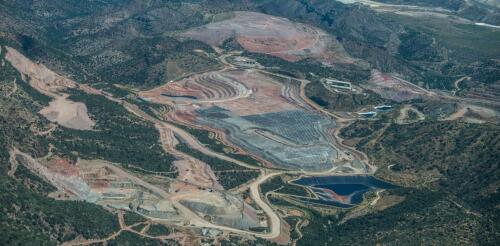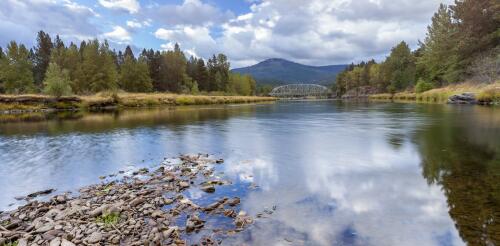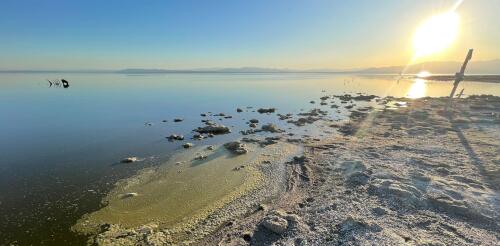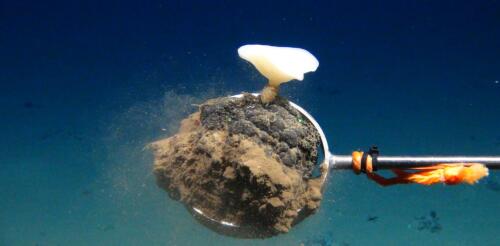Mining
When Congress opened U.S. public lands for mining in 1872, the nation was less than a century old. Miners used picks, shovels and pressurized water hoses to pry loose valuable minerals like gold and silver. Today, mining is a high-technology industry, but it is still governed by the Mining Law of 1872. As was true 150 years ago, companies can mine valuable mineral deposits from federal lands without paying any royalties to the U.S. Treasury. Even when lands that formerly were available for mining receive new protected status as national parks or monuments, the 1872 mining law protects existing mining claims on those lands. That’s why a company called Energy Fuels Inc. just started mining uranium in January 2024 at a site in Arizona 10 miles from the Grand Canyon and inside a new national monument. Gold prospectors mining at Lake Coeur d'Alene, Idaho, circa 1885. Graphic House/Archive Photos via Getty Images...
On Sept. 3, 1973, a fire swept through the baghouse of the Bunker Hill mine in Idaho’s Silver Valley. The building was designed to filter pollutants produced by smelting, the melting of rocks that separates metal from its ore. The gases produced in this process carried poisons, including lead. At the time, the prices of lead and silver were climbing toward all-time highs. Rather than wait for new filters and repairs, company officials kept the mine running. They increased production, bypassed the filtration steps and, for eleven months, dumped noxious gases directly into the surrounding area. Then, horses in the area began dying. When data on children’s blood lead levels began to arrive in September 1974, one year after the fire, the results were shocking. The fire became one of the largest single lead-poisoning events in U.S. history. The Bunker Hill smelter in the 1970s. The mine closed in 1991, but planning is underway...
Imperial County consistently ranks among the most economically distressed places in California. Its Salton Sea, the state’s biggest and most toxic lake, is an environmental disaster. And the region’s politics have been dominated by a conservative white elite, despite its supermajority Latino population. The county also happens to be sitting on enough lithium to produce nearly 400 million batteries, sufficient to completely revamp the American auto fleet to electric propulsion. Even better, that lithium could be extracted in a way consistent with broader goals to reduce pollution. The traditional ways to extract lithium involve either hard rock mining, which generates lots of waste, or large evaporation ponds, which waste a lot of water. In Imperial Valley, companies are pioneering a third method. They are extracting the mineral from the underground briny water brought up during geothermal energy production and then injecting that briny water back into the ground in a...
The story of renewable energy’s rapid rise in Latin America often focuses on Chinese influence, and for good reason. China’s government, banks and companies have propelled the continent’s energy transition, with about 90% of all wind and solar technologies installed there produced by Chinese companies. China’s State Grid now controls over half of Chile’s regulated energy distribution, enough to raise concerns in the Chilean government. China has also become a major investor in Latin America’s critical minerals sector, a treasure trove of lithium, nickel, cobalt and rare earth elements that are crucial for developing electric vehicles, wind turbines and defense technologies. In 2018, the Chinese company Tianqi Lithium purchased a 23% share in one of Chile’s largest lithium producers, Sociedad Química y Minera. More recently, in 2022, Ganfeng Lithium bought a major evaporative lithium project in Argentina for US$962 million. In April...
As companies race to expand renewable energy and the batteries to store it, finding sufficient amounts of rare earth metals to build the technology is no easy feat. That’s leading mining companies to take a closer look at a largely unexplored frontier – the deep ocean seabed. A wealth of these metals can be found in manganese nodules that look like cobblestones scattered across wide areas of deep ocean seabed. But the fragile ecosystems deep in the oceans are little understood, and the mining codes to sustainably mine these areas are in their infancy. A fierce debate is now playing out as a Canadian company makes plans to launch the first commercial deep sea mining operation in the Pacific Ocean. The Metals Company completed an exploratory project in the Pacific Ocean in fall 2022. Under a treaty governing the deep sea floor, the international agency overseeing these areas could be forced to approve provisional mining there as soon as spring 2023, but several coun...




